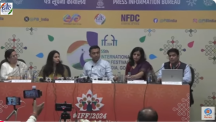Snapshot
The Global Entertainer
Media is consumed by audiences across demographics and various avenues such as television, films, out-of-home (OOH), radio, animation, and visual effect (VFX), music, gaming, digital advertising, live events, filmed entertainment, and print.
- India’s Media & Entertainment industry is expected to reach $100 Bn by 2030.
- The digital media segment is the 2nd largest M&E sub-segment witnessing a 15% growth in 2022 to reach INR 654 Bn
- Online gaming grew 22% in 2023 to reach INR 220 Bn, and is expected to reach INR 388 Bn by 2026
- The filmed entertainment segment grew 14% in 2023, to reach INR 197 Bn. 1790+ films were released in 2023, generating an all-time high of INR 120 Bn in theatrical revenues
- The Animation & VFX segment grew 6% to reach INR 114 Bn and is expected to attain INR 185 Bn by 2026
Up to 100% FDI allowed in Teleports, DTH, Multi-System Operator, cable networks in DAS areas, mobile TV, Headend-in-the-Sky Broadcasting Services
100% FDI is allowed in Publishing/ Printing of scientific and technical magazines/ Specialty journals/ Periodicals under the government route.
For further details, please refer FDI Policy
- %
Traditional Media’s contribution to total M&E revenue
- %
New Media’s contribution to total M&E revenue
- %
E-commerce advertising crossed INR 185 Bn to garner with total digital advertising
Explore Related Sub Sectors
India is world’s 2nd largest market by app downloads with 26.4 Bn new app downloads.
India is the second largest social media market by the number of users (In absolute terms).
Video is the largest earning segment of media with 67% growth in 2023.
- Industry Scenario
- FOREIGN INVESTMENT
- INDUSTRY TRENDS
- POLICIES & SCHEMES
Industry Scenario
India is spending 78% of its time on mobile phone apps on media and entertainment. The Indian M&E sector powered through to a growth of 8.1% to reach INR 2.3 Tn in 2023
India secures 4th rank in “ICT Services exports”. India’s Media & Entertainment industry is expected to grow to INR 3.08 Tn by 2026 at 10-12% CAGR, led by OTT, Gaming, Animation and VFX.
- Regional OTT content volumes exceeded Hindi language content in 2023 for the first time.
- Indians spent 13 Bn+ hours on online sports, among the most time spent in the world.
- 56% of viewership on Television was in Indian regional languages.
- Animation segment saw huge demand from OTT platforms and kid's channels.
- Digital advertising grew 15% to reach INR 576 Bn in 2023 and is expected to reach INR 842 Bn by 2026.
Government Initiatives
- The Government of India has taken various initiatives such as digitizing the cable distribution sector to attract greater institutional funding, increasing the FDI limit from 74% to 100% in cable and direct-to-home (DTH) satellite platforms, and granting industry status to the film industry for easy access to institutional finance.
- Film Facilitation Office (FFO) set up by the Ministry of Information & Broadcasting, Government of India, acts as a single window clearance and facilitation point for producers and production companies with a view to assist them in getting requisite filming permissions.
- The merger of Film Media Units in December 2020 by the Ministry of Information and Broadcasting under one corporation will lead to convergence of activities and resources and better coordination, thereby ensuring synergy and efficiency in achieving the mandate of each media unit.
- In September 2020, the Government of India announced its plans to develop an Animation, Visual Effects, Gaming and Comic (AVGC) Centre for Excellence in collaboration with IIT Bombay.
GROWTH DRIVERS
Internet Penetration
Internet penetration in India as of Sept 2023, is over 918.9 Mn.
Digital Payments
Digital payment transactions in India have significantly increased to 11,660 Cr transactions in FY 2023-24 (till 11th Dec 2023).
Smartphone Userbase
Smartphone users reached 574 Mn in 2023.
Mobile Data Prices
India ranked 5th amongst 233 countries in cheap mobile data prices, with 1 GB data costing $0.17. Additionally, India has the 3rd lowest average data tariff/GB.














